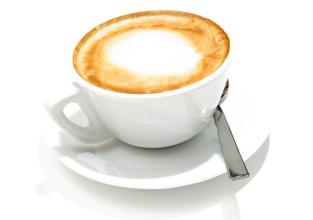In the coffee popular area, the British prefer to drink tea.
The British like to drink tea, but people living around Britain are keen on another kind of drink, coffee. The Nordic region, located in the north of England, is the most coffee-hungry region in the world. The five Nordic countries occupy the first, second, third, fourth and sixth places in the ranking of coffee consumption per capita, respectively, while Belgium, which ranks eighth, faces the United Kingdom across the sea. Why did the British fall in love with that cup of tea surrounded by the coffee epidemic area?
Used to love coffee.
Nowadays in Britain, drinking tea is more common than drinking coffee. But in history, coffee has also dominated the British beverage market. According to legend, there was the first coffee shop in England as early as 1760. At the end of the 17th century, there were more than 2000 cafes in the London area alone. The British have to talk loudly while tasting their coffee. As a result, the cafe has gradually developed into an important social and information exchange place in British society. At that time, the British cafe had a nickname, called "Penny University", which meant that you could enter the cafe for a penny to exchange ideas with people, get all kinds of information or read newspapers. It's like a university-like learning place.
Unfortunately, the British fell in love with coffee, but coffee could not fall in love with the land of England. The coffee trees used to produce coffee are small trees that are picky about the environment. They like cool and Rain Water-rich areas, but their lives are at risk in the event of frost. Therefore, the growth of coffee trees is basically concentrated in the mountains between latitude 25 °south and north latitude 25 °, while the southernmost end of Britain can only reach latitude 50 °north. In this way, it is almost impossible to grow coffee trees in the UK, and the demand for coffee can only be met by imports.
In the second half of the 17th century when coffee became popular and throughout the 18th century, the world coffee trade was dominated by Dutch people who were good at navigation and trade. The coffee in the hands of the Dutch comes mainly from their three colonies: Indonesia, Suriname and Sri Lanka. Sri Lanka, also known as Ceylon at that time, was an island country, located between 5 °and 10 °north latitude, completely within the coffee growing belt. The mountain area in the middle of the island is very suitable for the growth of coffee trees, regardless of climatic conditions or soil conditions. Sri Lanka was chosen by the Netherlands as the first trial planting area of coffee trees because of its superior natural conditions, and this is where the coffee growing industry of the Dutch started. The British have been drinking coffee bought from the Dutch for more than 100 years.
After the 19th century, the balance of power of European countries changed greatly, and so did the distribution of colonies. The declining Netherlands lost control of Sri Lanka and was taken over by Britain, already the world's number one power. Britons, who love to drink coffee and even more love to make money from coffee, have made great efforts to promote the expansion of the coffee growing industry in Sri Lanka. Unlike the Dutch, after discovering that plains and slopes at low elevations had been largely used, the British turned to plateaus and peaks. As a result, a large number of pristine jungles at high elevations were quickly cut down and developed into coffee plantations. Driven by the British, the acreage of coffee in Sri Lanka doubled from the 1830s to the 1960s. By the 1880s, the acreage doubled again to nearly 1600 square kilometres in Sri Lanka at the time, with coffee trees growing on nearly 15 per cent of the farmland. With the continuous expansion of planting area, Sri Lanka's coffee exports have also begun to rise explosively. In the 30 years from 1840 to 1870, Sri Lanka's coffee exports increased 20-fold.
The continuous supply of Sri Lankan coffee not only meets the needs of the British market, but also makes Britain the controller of the world coffee trade. However, like many lessons in the history of the planting industry, the coffee plantation in Sri Lanka is a man-made single species ecosystem whose prosperity is characterized by changes in the environment and extreme fragility of disease tolerance.
In 1875, just as Sri Lanka's coffee industry was booming, the destructive coffee rust began to prevail in the island. The leaves of the diseased coffee tree first appeared some small yellow spots, then the spots became bigger and bigger, and the color gradually changed from yellow to red, and finally, the red spots merged into large disease spots. These spots are as brown as rust, from which rust gets its name. Diseased leaves with "rust spots" will gradually wither and fall, and the whole coffee tree will lose its ability to produce coffee and die slowly within a few years.
When all efforts failed, Sri Lanka's planting industry finally chose to give up. To make up for the loss, they bought tea trees instead of coffee. Tea trees which are well adapted to Sri Lanka's climate and land and are highly resistant to rust have since taken root in Sri Lanka and turned Sri Lanka into a world-famous tea exporter. Today, when we talk about Britain's long tea culture, we will naturally refer to the world-famous Ceylon tea.
Change it to "that cup of tea".
What happened to the British when they changed their beloved "cup of coffee" to "that cup of tea"? There is no authoritative statement in history. However, there is a sudden change in the habits of the British. In the last year of the 17th century, the British official imported only 6 tons of tea. In less than 100 years, the British official imported more than 10,000 tons of tea. By the end of the 18th century, about 20,000 tons of tea had entered Britain through various channels. It has been recorded that, in addition to the popularity of tea in British upper-class society, beggars, rickshaw pullers and coolies also drank tea at that time.
Every time we talk about English tea culture, people may immediately think of very elegant afternoon tea. In fact, what really drives most British people crazy is "construction worker tea".
The so-called construction worker tea is to put a black tea bag in a large teacup and pour it into boiling water. when the brown color is strong, take out the tea bag and add milk and sugar to stir well.
According to reports, this relatively rough method of drinking tea was first popular among manual workers, especially construction workers, during the Industrial Revolution, so it got the title of "construction worker tea".
According to records, during World War I, workers in the rear arms factories had a special tea break every day because the arms factory management found that workers who drank large cups of strong milk tea were significantly more refreshed and efficient than those who did not drink tea. In today's Britain, whether blue-collar workers or white-collar workers, it is common to make cups of "construction worker tea" during the break, and many people have to drink several large cups a day to enjoy themselves.
An English folk song sings like this: "when the clock struck four, everything in the world stopped for tea." It turns out that in England, four or five o'clock in the afternoon is the famous "Teatime" (tea time). At this time, even if there is something big, we have to wait until the British finish their afternoon tea. This is an immutable rule.
Even in modern British companies, tea time has often become a standard system. However, many people may not know that afternoon tea, which seems to be a petty bourgeoisie way of life, actually originated in the countryside.
Many British people call afternoon tea "HIGHTEA", which comes from the English countryside. HIGH originally meant a "high table". In the English countryside, farmers used to sit at the kitchen table in the afternoon to make some hot tea, eat some bread and take a short rest before continuing their work. For fear that cats and dogs would jump on the table and spoil the food, farmers deliberately kept the table high, so they had the term "HIGHTEA". Unlike the traditional English afternoon tea in rural areas, afternoon tea is now enjoyed in high-end English restaurants, and guests must be well dressed.
Every day begins with tea and ends with tea, and the British are happy to repeat the routine of tea. As soon as I opened my eyes in the morning, I leaned against the head of the bed to enjoy a cup of "bedside tea"; I had another cup of "breakfast tea", also known as "eye-opening tea" at breakfast; no matter how busy I was in the morning, I had to pause for 20 minutes to take a sip of "work break tea"; before I got off work, it was time for "afternoon tea" to drink tea and dessert; and "farewell tea" before going to bed.
How much tea does an Englishman drink every day? According to statistics, each person in the UK drinks four cups of black tea every day, which is about 3.5 kilograms of tea per person in a year.

Important Notice :
前街咖啡 FrontStreet Coffee has moved to new addredd:
FrontStreet Coffee Address: 315,Donghua East Road,GuangZhou
Tel:020 38364473
- Prev

The rise of Coffee Culture in China: slow Life in Fast cities
Shanghai, March 2 (Xu Xiaoqing and Cai Qing) Lao Mai Cafe, located on Taojiang Road in Shanghai's Historical scenery Reserve, is well-known in Shanghai. The first time I drank coffee was when I was sent abroad in the 1980s. At that time, I was just curious and didn't realize that I would open a cafe one day. Said Liu Renhe, a 50-year-old Wuhan native who owns Lao Mai Cafe. Shanghai food
- Next

Introduction to the production area of Arabiya Coffee Bean Flavor description
Arabica coffee beans are introduced and the coffee is also low in caffeine. The traditional processing method is to harvest coffee berries manually, peel them on the same day, and use manually selected coffee beans to be ground and boiled after baking. With fresh milk, do not use the general cream on the market, so the coffee is particularly smooth and rich. The specific characteristics are as follows: 1, the smell of fragrance is strong; 2.
Related
- Beginners will see the "Coffee pull flower" guide!
- What is the difference between ice blog purified milk and ordinary milk coffee?
- Why is the Philippines the largest producer of crops in Liberia?
- For coffee extraction, should the fine powder be retained?
- How does extracted espresso fill pressed powder? How much strength does it take to press the powder?
- How to make jasmine cold extract coffee? Is the jasmine + latte good?
- Will this little toy really make the coffee taste better? How does Lily Drip affect coffee extraction?
- Will the action of slapping the filter cup also affect coffee extraction?
- What's the difference between powder-to-water ratio and powder-to-liquid ratio?
- What is the Ethiopian local species? What does it have to do with Heirloom native species?

